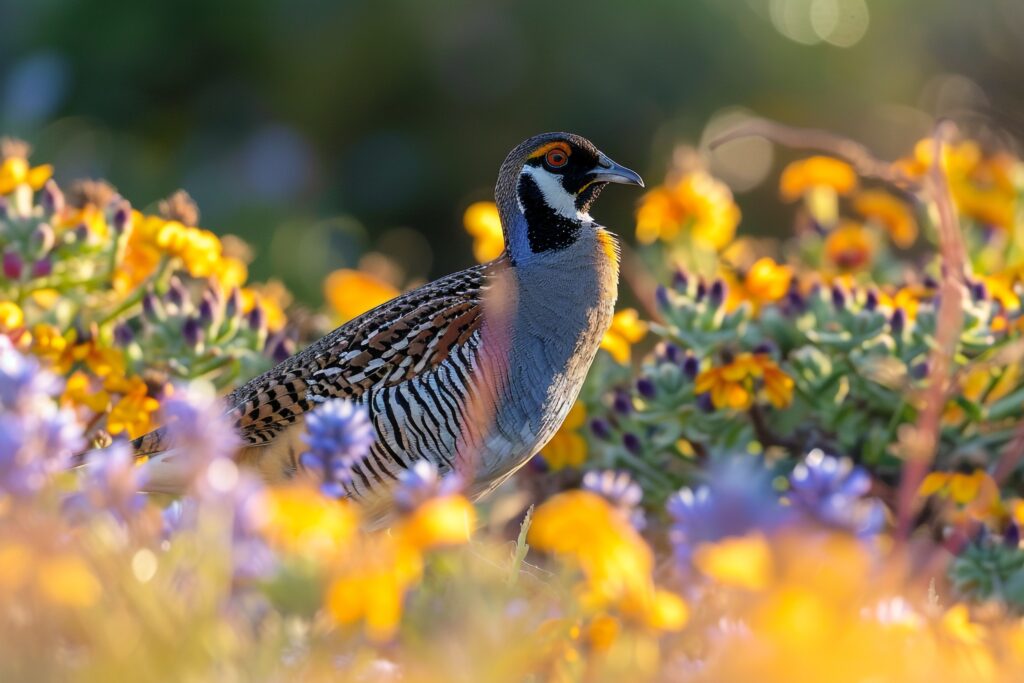
Explore the diverse wildlife thriving in Oak Ridge Estates. Learn about local species, their appearances, mating seasons, births, ecological roles, and guidelines for encounters.
🦌 Mammals
- Tule Elk (Cervus canadensis nannodes): Tan-colored deer with dark manes and large antlers. Mating season in late summer to early fall; calves born in spring.
- Pros: Grazing helps maintain grassland health.
- Cons: Can cause damage to crops or fences.
- Mule Deer (Odocoileus hemionus): Brown or gray with white tails tipped in black; large ears. Mate in fall; fawns born in late spring.
- Pros: Important herbivores that maintain vegetation balance.
- Cons: May damage gardens, crops, and pose hazards on roads.
- Bobcats (Lynx rufus): Spotted fur, tufted ears. Mate in winter; kittens born in spring.
- Pros: Control rodent populations.
- Cons: Rarely, they can prey on domestic animals.
- Mountain Lions (Puma concolor): Large cats with tawny coats. Mate year-round, primarily winter/spring; cubs born 3 months later.
- Pros: Key predators maintaining deer populations.
- Cons: Potential danger to pets and livestock.
- San Joaquin Kit Fox (Vulpes macrotis mutica): Small, sandy-colored foxes. Breed in winter; pups born spring. (Endangered)
- Pros: Aid in rodent control.
- Cons: Vulnerable to habitat loss.
- Long-tailed Weasel (Mustela frenata): Small, sleek mammals with brown coats and distinctive black-tipped tails. Mate in summer; offspring born spring.
- Pros: Efficient predators controlling small rodent populations.
- Cons: Occasionally prey on poultry.
- Rabbits (Sylvilagus spp.): Brown or gray with long ears. Breed throughout spring/summer; multiple litters annually.
- Pros: Vital food source for predators.
- Cons: Can damage gardens and crops.
- Raccoons (Procyon lotor): Grayish with black masks. Breed in late winter; kits born in spring.
- Pros: Effective scavengers.
- Cons: Can spread disease and rummage through garbage.
- Opossums (Didelphis virginiana): Grayish-white mammals. Mate year-round; babies carried in pouch.
- Pros: Consume pests like ticks and rodents.
- Cons: May invade human structures.
- Striped Skunks (Mephitis mephitis): Black with white stripes. Mate in late winter; kits born in spring.
- Pros: Control insects and small pests.
- Cons: Spray can be problematic around homes.
🐿️ Small Mammals & Rodents
- Western Gray Squirrel: Breed in late winter; babies born spring.
- Pros: Spread seeds aiding reforestation.
- Cons: Can chew wires or invade attics.
- California Ground Squirrel: Breed in early spring; offspring born late spring.
- Pros: Important prey animals.
- Cons: Extensive burrowing can cause landscape damage.
- Pocket Gophers: Breed year-round; several litters annually.
- Pros: Aerate soil.
- Cons: May damage gardens and yards.
- Voles, Moles & Shrews: Breed frequently year-round; litters born multiple times annually.
- Pros: Important insectivores and soil aerators.
- Cons: Can damage gardens and landscapes with extensive tunneling.
🦅 Birds
- Acorn Woodpecker: Breed spring; chicks hatch in summer.
- Pros: Aid in acorn distribution.
- Cons: Can damage wooden structures.
- California Scrub Jay & Blue Jay: Breed spring; chicks hatch late spring to early summer.
- Pros: Important seed dispersers.
- Cons: May compete with smaller birds at feeders.
- Turkey Vulture: Breed spring; chicks hatch early summer.
- Pros: Remove carrion, reducing disease.
- Cons: Roosting areas can become messy.
- Wild Turkey: Large, dark-colored birds with iridescent feathers and distinctive fan-shaped tails. Mate in early spring; poults hatch late spring.
- Pros: Control insects and weeds; attract tourism.
- Cons: May cause agricultural damage or become aggressive.
- Red-tailed Hawk, Cooper’s Hawk, Sharp-shinned Hawk: Breed late winter/spring; chicks hatch spring to early summer.
- Pros: Control rodent and small bird populations.
- Cons: Rarely pose risks to small pets.
- Great Horned Owl, Barn Owl, Western Screech Owl: Breed late winter; chicks hatch spring.
- Pros: Control rodent populations effectively.
- Cons: Minimal; occasional noise or nesting near human structures.
- Anna’s & Allen’s Hummingbirds: Breed in winter/spring; tiny nests with chicks soon after.
- Pros: Essential pollinators.
- Cons: Minimal to none.
🦎 Reptiles & Amphibians
- Western Fence Lizard & Alligator Lizard: Breed spring; hatchlings emerge summer.
- Pros: Insect control.
- Cons: Can enter homes occasionally.
- California Red-legged & Pacific Chorus Frog: Breed in winter/spring; tadpoles develop spring-summer. (Red-legged Frog is endangered)
- Pros: Indicators of environmental health.
- Cons: Sensitive to pollution.
🚨 Wildlife Encounters & Injuries
General Guidelines:
- Maintain distance, never feed or approach wildlife.
- For injured wildlife, contact professionals immediately.
Emergency Contacts:
- Pacific Wildlife Care: (805) 543-9453
- California Fish & Wildlife: (916) 358-2900
- San Luis Obispo County Animal Services: (805) 781-4400
🤝 Support Local Wildlife
Adopt wildlife-friendly practices, protect habitats, and participate in conservation efforts to sustain the natural beauty and ecological balance of Oak Ridge Estates.